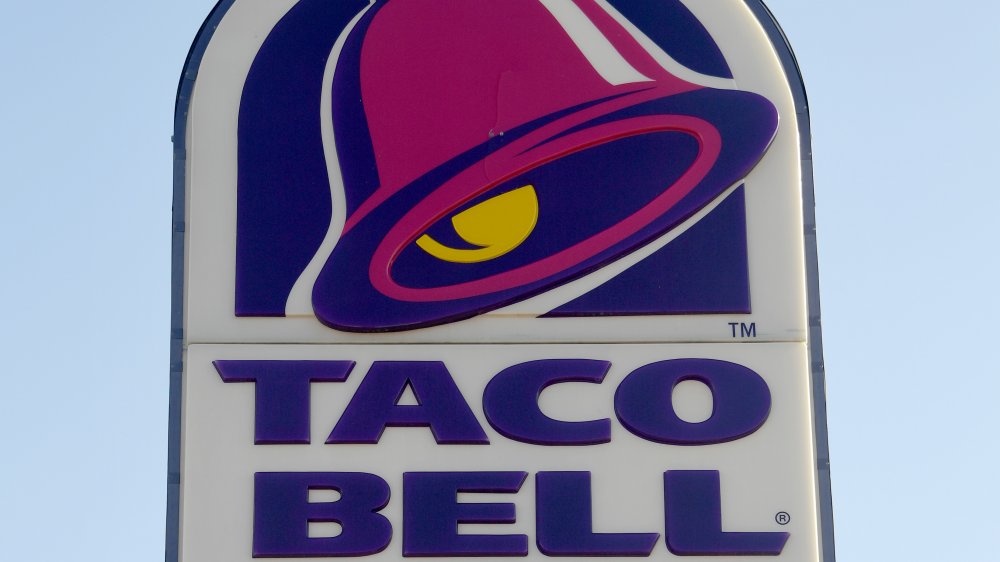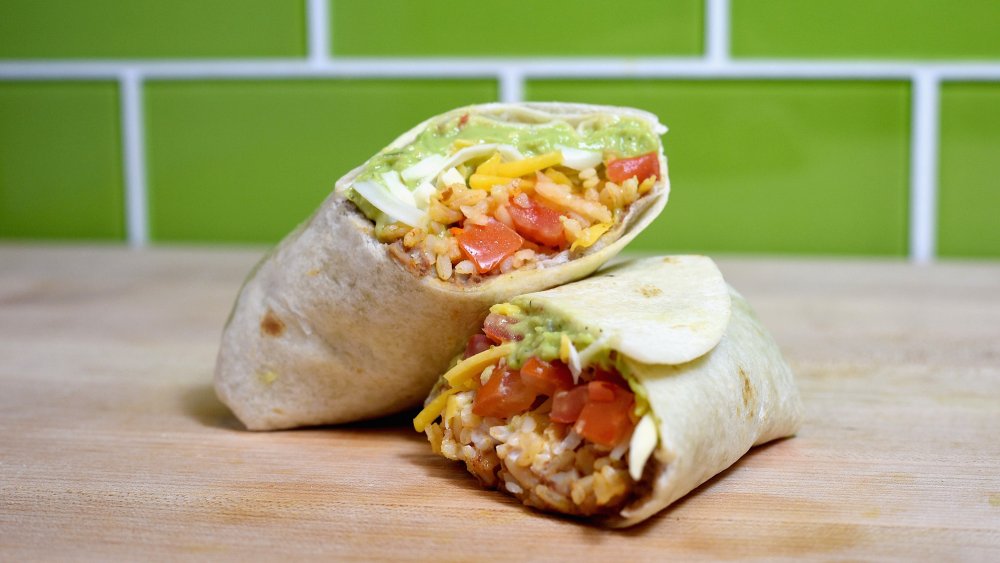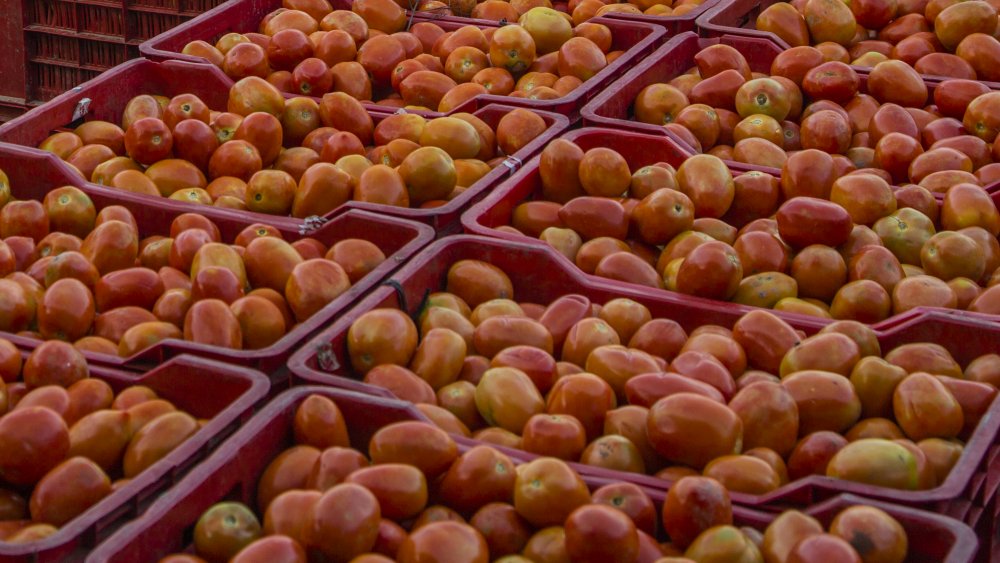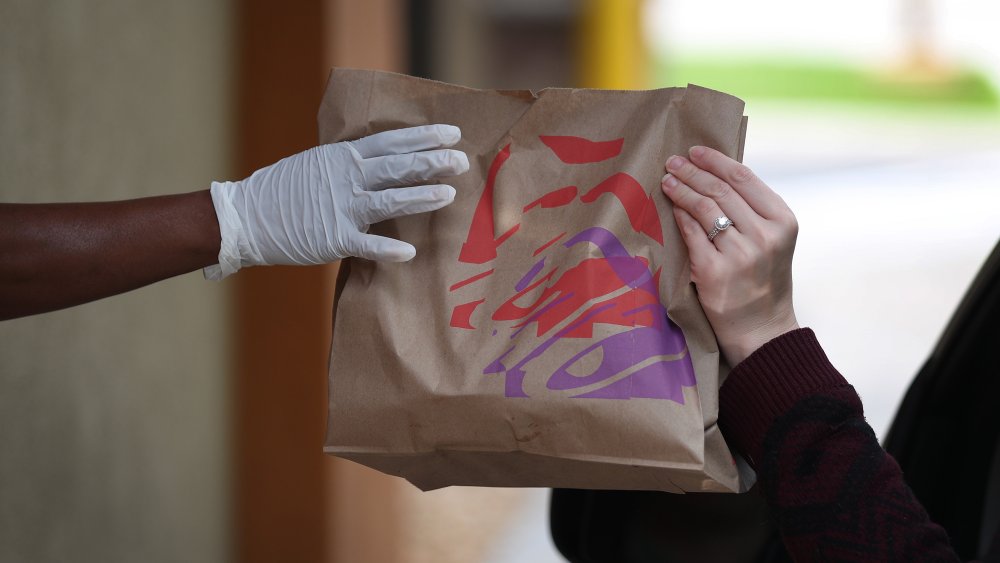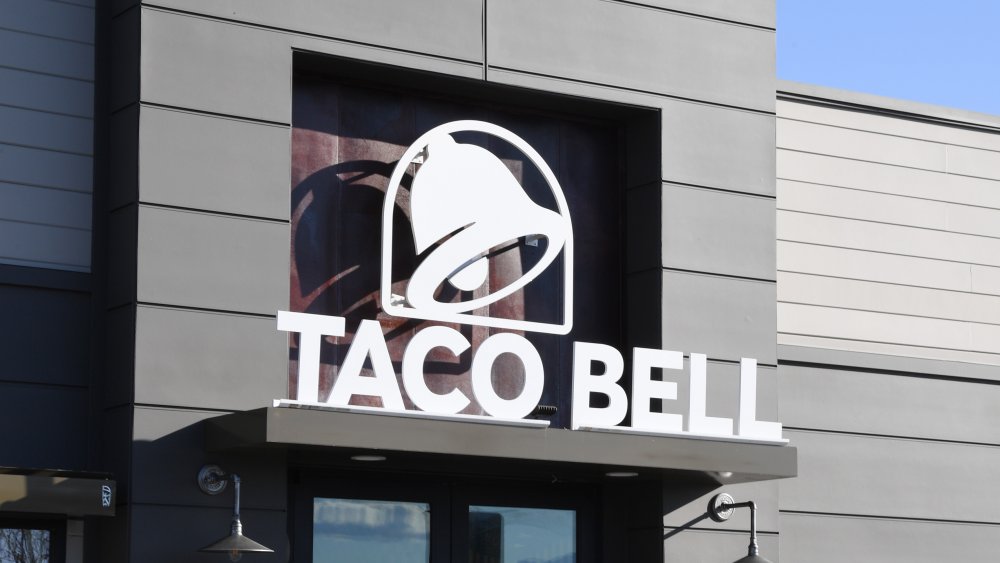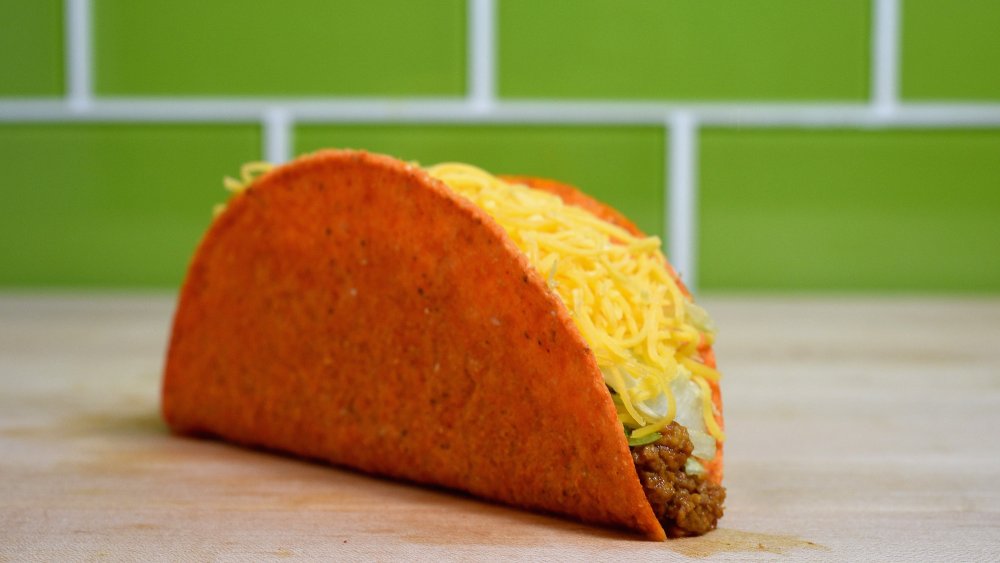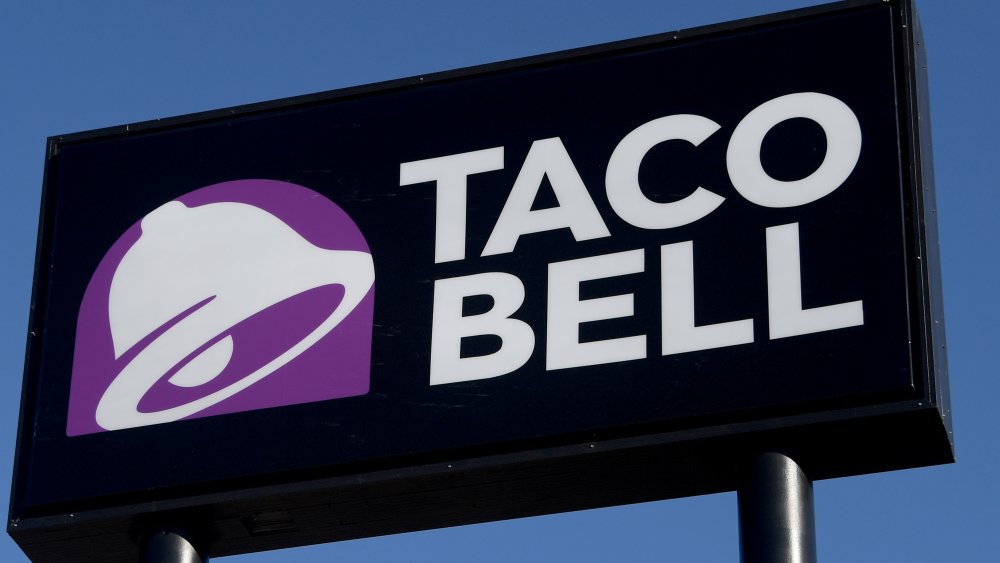We Finally Know Why Taco Bell Is So Cheap
Fast food restaurants are famous for serving quick, inexpensive meals for everyone from individuals on the run to a whole family in need of dinner. They do this through a number of pretty similar tactics like buying in bulk, serving cheap ingredients, and strategic menu pricing. But somehow, among dozens of competitors, Taco Bell stands out as one of the cheapest, even though it also boasts so many different options.
So how exactly does Taco Bell keep its prices so low while keeping the food so completely crave-worthy? Well, there's actually more to it than you might expect, and it has to do with everything from ingredient sources to worker pay to that famous value menu you love. As it turns out, Taco Bell's famous slogan, "think outside the bun" can apply not only to Taco Bell's food but also its prices.
Taco Bell's menu is unrivaled
Taco Bell had always been famous for its dollar menu, which offers meals at especially inexpensive prices. However, at the end of 2019, Taco Bell changed its famous dollar menu into the Cravings Value Menu. While you might expect this name change would mean an increase in menu prices to back over a dollar, this move actually allowed Taco Bell to expand the list of offerings on the value menu. That ultimately means more deals at better prices.
The value menu now has different tiers, meaning you can start out with something like a Nacho Crunch Double Stacked Taco for a dollar and add on items like pico de gallo, guacamole, and sour cream for a few cents each. Those ingredients add up to make a filling meal while the costs stay low.
The new menu is very similar to the dollar menu that's been around and popular since the 1990s, only it's now even more dynamic.
Taco Bell buys in bulk to save major bucks
Admittedly, this strategy isn't exactly unique to Taco Bell. Since the invention of modern fast food franchises, one key principle that has remained intact is the theory of economies of scale, which essentially means that each individual additional unit of output (for Taco Bell, each individual taco) costs the company less than the previous unit. Say you're at home making yourself a taco from scratch. Why not make yourself a second taco? The ingredients are already out, and it will be significantly less work if you make it alongside the first.
One of the reasons this principle plays out so well for fast food companies is that the companies can already bring in ingredients for fairly cheap. For better or worse, bulk ingredients like corn remain extremely inexpensive in America, and buying more of it generally means a better deal. Taco Bell's final product allows you to stick to your budget, even as you buy another taco, and another one, and another one.
Taco Bell's seasoned beef is only 88 percent real beef
This one sounds a bit grosser than it really is. Sure, Taco Bell's beef isn't exactly 100 percent real beef, and if we're being exact, Taco Bell only gets a B+ in that the meat quality department. But thanks to a lawsuit resolved in April 2011, we now have a clearer picture of what you can expect from the beef taco you'll find at Taco Bell.
So what's in the beef? A handful of ingredients with really long, confusing names, for starters. According to a breakdown from First We Feast, the mystery meat includes maltodextrin, for texture, trehalose, as a sweetener, and torula yeast, for a savory taste. It also includes several stabilizers, lactic acid, and artificial coloring.
But perhaps the beef's most surprising ingredient is one you might find in your baking cabinet at home. Taco Bell puts cocoa powder in the beef, most likely for coloring. It's a familiar brown color. The cocoa powder may also be for flavoring, although fortunately for patrons, the taco meat doesn't taste too chocolatey.
Taco Bell's food has a lot of filler ingredients you wouldn't necessarily expect
If you spend a lot of your time reading the nutrition facts on fast food menus, you may know that fast food franchises often save money by including some filler ingredients that aren't super familiar to the fresh ones you'd buy in the store. And while Taco Bell boasts a number of fresh, crunchy vegetables in menu classics like the Crunchwrap Supreme, the menu also has several of the typical inexpensive fast food staple ingredients, often artificially stabilized for a long shelf life.
A quick glance over Taco Bell's ingredient list will inform you that the chain's eggs, for example, contain not just chicken eggs, but also soybean oil, xanthan gum, and guar gum. Xanthan gum thickens and stabilizes the eggs, resulting in a creamy texture and a longer shelf life, which save Taco Bell money by reducing food waste. And xanthan gum doesn't exactly make the food less healthy per se, though it's not something you'd likely add to your food at home. Your body can't digest it, which means it provides no nutrients (and doesn't pack on any calories), but it does help bring down Taco Bell's egg prices.
Not every Taco Bell menu item has meat, making it way less expensive than other fast food joints
In 2019, Taco Bell pledged to "be even easier and better for vegetarians and flexitarians." This isn't exactly a new concept for Taco Bell, which already boasted a menu containing over 8 million vegetarian combinations, but any fast food chain declaring a specific mission to be more vegetarian-friendly indicates a major cultural transformation happening in the food industry.
And that wasn't just an empty pledge. Taco Bell's website actually contains resources for how to eat vegan at the Mexican food chain. Eating less meat not only means fewer dead cows and lower cholesterol, it also has major savings implications on your wallet. Meat can be expensive, so Taco Bell's marketing of vegetarian options also means the chain can advertise cheaper meals, even if that meal is just a Crunchwrap Supreme without the beef. And because these meals still have beans, sour cream, and starch like corn, they're still totally filling.
Taco Bell doesn't pay its workers that much
The unfortunate truth is that fast food is often cheap because the labor is cheap. Fast food workers are often paid minimum wage or just above minimum wage rates. According to PayScale, Taco Bell's salaries range from an average of $7.81 to $14.18 per hour, with kitchen workers generally earning just $8.50. That same site estimates the average fast food worker's salary is $8.85, which definitely puts Taco Bell at a similar rate to most other fast food chains.
While that salary is still above minimum wage in many states, it is important to keep in mind that one of the reasons the food is so cheap is because the people working long hours to get you that food aren't making a ton of dough. For Taco Bell and its customers, this may mean important savings, but it may spread employees pretty thin.
Taco Bell's food is deliberately made for people who don't plan on spending a ton for a meal
Taco Bell keeps prices low for a reason, and everything about the franchise's pricing is highly intentional. Their patrons expect low prices, an expectation Taco Bell is driven to fulfill.
As Ta-Nehisi Coates pointed out for The Atlantic, "You can't simply stop eating fast food. You have to change a host of behaviors related to why you eat fast food." People buy fast food for a reason, and it's not just because they are lazy. Often, Taco Bell patrons are looking for a cheap but somewhat healthy way to feed a whole family on a budget, sometimes after working long hours or when they're too busy to cook. Taco Bell definitely took this into account when making its combos and party packs, which are designed for customers who want to feed multiple people on one order.
Taco Bell's basic foods may be cheaper, but the add-ons pile up
We all know that Taco Bell has a killer value menu with many items that cost just a dollar, and those prices stay low because Taco Bell's add-ons like guacamole, sour cream, and pico de gallo usually cost extra. In fact, Taco Bell boasts that it has millions of menu combinations and modifications. Essentially, the restaurant offers endless choices. The only thing to keep in mind while indulging in these endless choices is that 50 cents here and there tacked on to each taco can add up eventually.
This way, Taco Bell can continue marketing extremely cheap menu prices, but once that receipt comes through, you could be paying just a little bit extra than expected. Overall, however, the add-ons are relatively inexpensive, so unless you're putting together some crazy combinations, you shouldn't be too surprised when you hand over your credit card.
